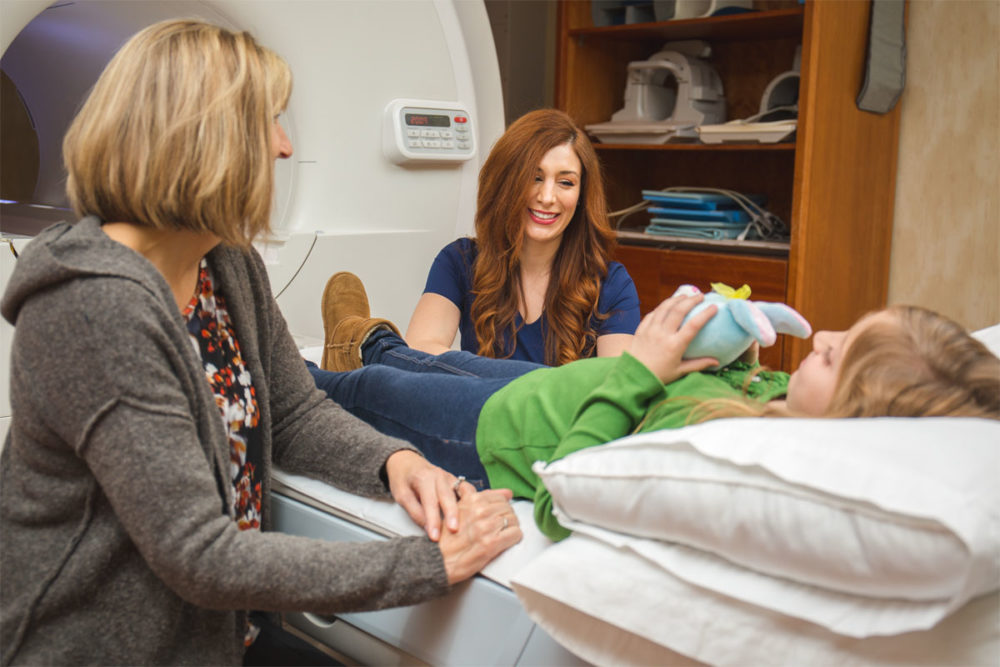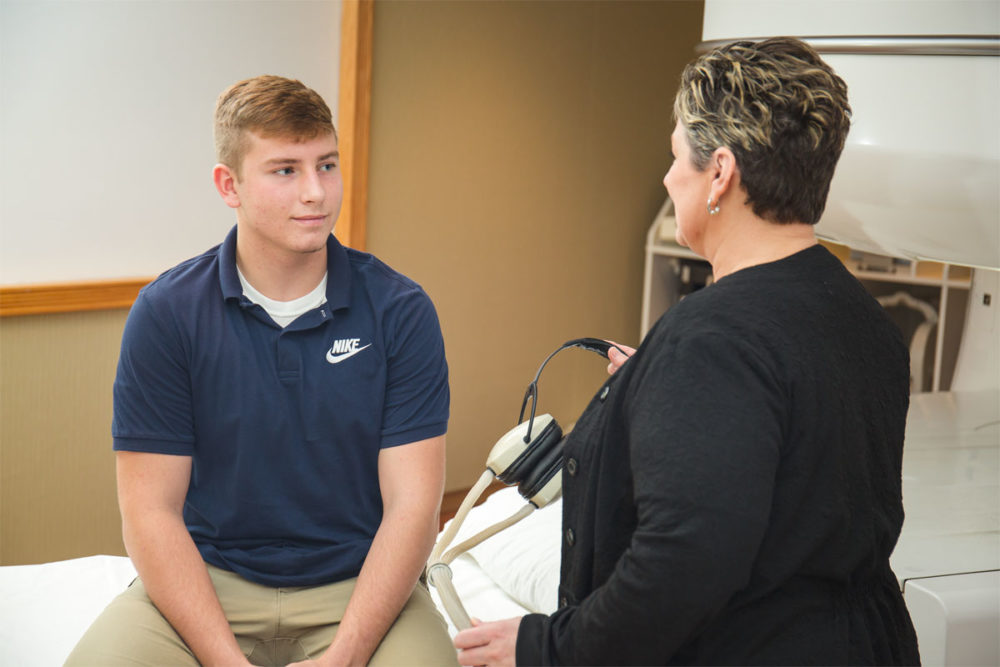Preparing For Your First MRI
Here’s what you need to know about the Magnetic
Resonance Imaging process at 611 MRI
Being prescribed an MRI scan can be overwhelming and for many, it will be their first experience with medical imaging. In reality, an MRI scan is nothing to be worried about, and while the machine may seem large and ominous at first glance, it’s actually a highly specialized and advanced piece of equipment that’s safe and is operated by certified experts. If that still doesn’t alleviate your concerns, we’ve broken down what to do and expect when coming in for your first MRI scan so there are no scary surprises on the day.
Before Your Appointment
Can I Eat?
Unlike other imaging processes, MRI scans are typically unaffected by food or drink. That means you’ll be able to eat and drink before your appointment, and importantly, you should still be able to take regular medication as needed. Of course, there are always exceptions. In some cases, we will need to use contrast dye for your scan, which can be affected by your food and drink intake. In these cases, we’ll be sure to let you know exactly how early you need to stop eating, and we can usually schedule your scan at a time that makes this easier for you.
What Do I Wear?
How to dress for an MRI largely depends on the area that needs to be scanned, and in some cases, you may even be asked to change into a medical gown. It’s important to keep in mind that the M in MRI stands for Magnetic, so it’s best to avoid jewelry, zippers, and anything else metallic, as you’ll usually end up having to remove it anyway. That’s why we recommend you leave all jewelry, except a wedding ring, at home.
Can I Bring Someone?
Yes. You’re more than welcome to bring someone for support who can stay with you throughout the process. We want you to feel as comfortable as possible from start to finish.
Is It Safe?
Although MRI imaging is completely safe, the use of incredibly powerful magnets in the process means that people with implants might not be able to have an MRI scan. It’s important that you review this list and contact your doctor if you have any of the following:
- A pacemaker
- Cardiac pumps
- A defibrillator
- Aneurysm clips in the brain
- Carotid clip
- Metal fragments in your eye(s)
- Inner ear implants
We also ask that you contact your doctor if you are pregnant, asthmatic, anemic, or have ever had an adverse reaction to contrast media or dye.
When You Arrive
We’ll Get You Ready
When checking in a friendly staff member will make sure we have all the details we need from you. There are several conditions that may prevent you from being able to have an MRI scan performed, but if you’ve made it this far, we should have covered them. From here, you can expect the process to take roughly 30-60 minutes.
Depending on the type of MRI scan needed and the area being imaged, we may need to give you an injection of contrast dye and you be asked to change into a medical gown. If you’ve brought a friend, relative, or partner for support, we’ll need to ensure that they also remove any metal and do not have any form of implants that may be affected by the magnets.
Inside The MRI Machine
There are two styles of MRI machine available at 611 MRI; traditional and open.
The traditional MRI is a short, hollow tube similar to the machines you’ll typically see on TV or in movies, with a motorized bed that slides through to position your body perfectly. Our machine uses the widest bore available in the area at almost 28” across, allowing for a more comfortable experience.
Our open MRI machine foregoes the tube and instead is open on the sides, allowing patients to stretch out and relax. This is far more comfortable for patients who suffer from claustrophobia and allows those accompanying patients to stay in closer contact for support.
To begin, you’ll be asked to lie on the motorized bed either head or feet first and a friendly technologist will position you, making sure you are comfortable while allowing access to the area that needs to be scanned. You will be asked to hold still. During certain exams you may be asked to hold your breath briefly.
While images are being taken you may hear loud knocking sounds. You can think of these as a camera shutter. The entire imaging process in either style of machine usually takes up to 45 minutes, but in some instances may take longer if more detailed images are needed. If at any point you begin to feel uncomfortable, don’t hesitate to let the technicians know and they’ll do their best to make the experience more pleasant.
Enjoy The Rest of Your Day
Once the imaging is complete, you’ll be free to change back into your clothes and get on with your day while we interpret your scans.
What Happens Next?
Reading Your Scans
One of our specialized radiologists will interpret the images taken and create a detailed report of their findings. This usually takes less than 24 hours. In rare cases, you may need to come back in to have an image rescanned, but because of the advanced equipment we use and the skilled technologists operating it, the rate of patients needing to come back for rescans is only 1%.
Sharing The Results
We typically have a detailed report of your results sent over to your physician within 24 hours of your visit. From there, they’ll use those results to assess the next steps in your diagnosis or treatment.


